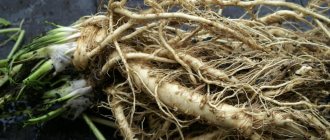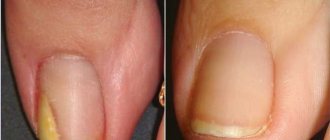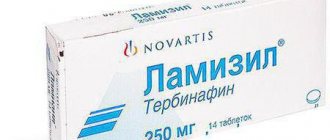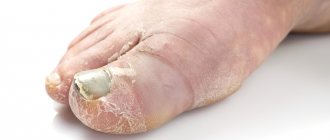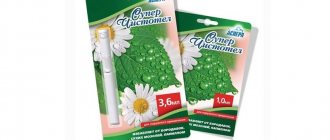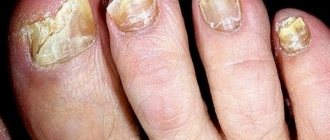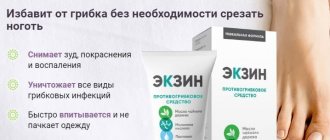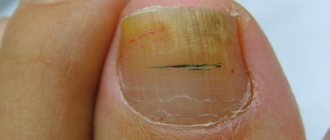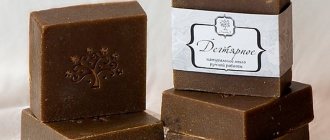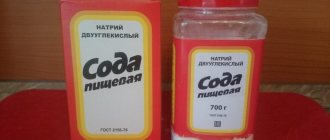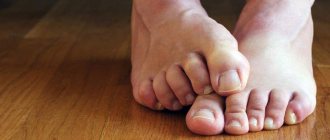Effect of laundry soap
Folk remedies based on it cope well with the first signs of fungus. It contains natural fats of animal or plant origin with the addition of sodium salts and a certain amount of synthetic components. When applied to nails and skin, soap kills the pathogen and acts with:
- anti-inflammatory;
- antibacterial;
- softening;
- anti-allergenic effect.
Timely and regular treatment of toenails or fingernails can reduce the intensity of sweating, reduce odors, and soothe itching. It is important to choose the right soap for making antimycotic compositions yourself.
Household recommendations and prevention
Cleanliness is the key to health!
Treating the affected nail areas is not everything. The environment in which you live and its ecology are important. Therefore, it is worth taking care of disinfection in the apartment.
We recommend soap solution:
- grind brown laundry soap;
- mix with baking soda;
- and add water.
Once a week, all surfaces should be treated with this solution: furniture, window sills, floors, plumbing surfaces, shower room. With this simple weekly operation you will protect your home environment from the spread of fungal infections.
And some more recommendations:
- If you find yourself on the beach, do not forget to wear shoes, this will not be an unnecessary preventive measure.
- We recommend wearing cotton socks; you should also change them regularly.
- Never wear someone else's shoes. It doesn’t matter if the shoes are from a stranger or a relative.
- Clean your shoes regularly.
- Keep your feet dry and clean. Dry your feet thoroughly after washing. They must be completely dry. Do not create preconditions for fungal infections.
- Clean your home regularly using disinfectants. A lot depends on the external environment in which the legs are located.
- At the slightest suspicion of a fungus, first visit a doctor.
- Do not try to rely only on self-medication.
We all understand that fungal infection can only occur if there is immediate and direct contact of the skin or nails with a fungal infection through household contact. However, we must note that a strong and reliable immune system simply will not allow a fungal infection to develop properly before it is necessary to contact a specialist and begin treatment. On the other hand, if the body is weakened, it will be extremely difficult for it to fight the development of infection. Don't forget about hygiene and prevention.
Which one to choose?
The main criterion for choosing a suitable bar of soap is the percentage number on its wide side. This can be 40, 60, 72%, which means the proportion of fatty acids in the composition. Soap with a 72% concentration, which GOST classifies as category 1, has the necessary medicinal properties against fungus. In addition, you can focus on:
- color, which should be as dark as possible;
- smell without admixture of flavorings;
- composition without preservatives, dyes or other additives.
When soap with the desired composition has been selected, you need to take care of the recipe for the future anti-fungal remedy and the timing of its use.
How does laundry soap work for onychomycosis?
Laundry soap contains 72% fatty acids and 20% alkalis. There are no dyes, flavors, chemical compounds, or harmful impurities for humans. You can determine the quality by the color of the bar - the darker the better.
The benefits of laundry soap have been known for a long time. Previously, it was used as a disinfectant to wash clothes of people who suffered from contagious diseases, such as scabies.
Nowadays, laundry soap is often used against nail fungus. This is due to a good therapeutic effect, which is confirmed by many reviews on the network. The product helps not only with onychomycosis, but also against the background of mycosis of the skin.
Medicinal properties:
- Antibacterial effect. The use of soap contributes to the formation of an alkaline environment, which is unfavorable for the proliferation of fungal microorganisms.
- The antiseptic effect manifests itself when disinfecting surfaces touched by a sick person, shoes and clothing.
- Anti-inflammatory effect - soap stops the inflammatory process, dries out the skin, and stops the proliferation of pathogenic microflora.
The main advantage of traditional treatment is the naturalness of the composition. Therefore, this method has no medical contraindications. You can treat young children, the elderly, pregnant and lactating women.
Important addition: How to use celandine for lichen?
Does soap help with severe nail fungus?
In advanced cases, traditional treatment of fungal infection involves a complex effect - tablets + external agents. As for soap, it will speed up recovery, but will not cure the patient.
In principle, in severe cases of fungus, not a single folk remedy - kombucha, iodine, vinegar, essential oils, salt and soda baths, etc. will cope with the disease.
Treatment of fungus with laundry soap for foot and nail fungus
In order for the treatment of fungus with formulations with laundry soap to be effective, the procedures must be repeated daily for the entire treatment period. After recovery, a preventive course for several days is recommended.
Soap and soda bath
Grind the soap on a grater in the amount of 2 tablespoons with top. The prepared shavings are completely dissolved in 2 liters of boiling water, then add 4 tbsp. l. soda and mix again. The bath is taken for up to 25 minutes, then the skin on the legs is thoroughly dried with a towel. Typically, such a bath is used at the preparatory stage before using medications against fungus. After the procedure, the surface of the nails softens, it is easier to process it with a file and scissors, and the structure of the plate becomes more susceptible to antifungal drugs. In the early stages of infection, it can be used as an independent drug against nail fungus.
Laundry soap with tar
The effectiveness of procedures against fungus using soap is increased by the use of birch tar. The procedure is performed in several stages:
- Toenails are steamed in a container with soapy water; for every liter of boiling water you will need a tablespoon of shavings.
- During the 10-minute procedure, the limbs are rubbed with a brush with medium-hard bristles or a washcloth.
- After steaming, the skin is treated with pumice, the dead layer is removed from the nails with a nail file, and the free edge is trimmed.
- The nail plates on the toes and the skin are lubricated with external antimycotic ointment or a regular moisturizer, which is left overnight.
- After sleep, you need to rinse your feet under running water and wipe dry, then apply birch tar to the plates with light rubbing movements.
- The treated limbs are covered with newsprint or cellophane film and rest is provided for 2 hours.
- After this time, the tar is removed with cotton swabs, fresh socks made from natural materials are put on the feet and worn for 2 days.
- The final step is to rinse the limbs with soapy water and apply a moisturizer or antifungal cream.
The procedure with alternating soap and birch tar for nail fungus is repeated at least 2 times a week. If treatment is started on time, positive changes appear after 14 days.
Soap and salt mixture for nail fungus
The mixture is in the form of a paste, used for applying compresses. Laundry soap against fungus in this composition is prepared from 2 tbsp. l. warm water, the same volume of soap shavings and 1 tsp. salt. All components are mixed until smooth. The mixture is applied in a thin layer and left for up to 2 hours. The softened fragments of infected nails are removed and the procedure is repeated for 2 weeks.
Dry lotions
Lotions made from laundry soap with other anti-fungal ingredients are made in a similar way, but with a minimum amount of water. Soda or table salt can be used as components for mixtures. The selected elements are mixed until a paste with a homogeneous consistency is obtained. The lotions are kept for up to 2 hours, after which the toenails or fingernails are treated with a file and trimmed. Antimycotic drops or spray are applied to the cleaned plate. To prevent the skin on your feet from drying out, use a moisturizer. Daily repetition 1 time, before bedtime, treatment continues until recovery.
Laundry soap for nail fungus: principle of action
For decades, laundry soap has been used in the treatment of fungus on the feet and hands. This remedy was used back when pharmacies did not sell a single medicine without a doctor’s prescription. At that time there were practically no effective drugs. Due to this, they resorted to traditional methods of treatment.
Everyone knows that laundry soap is:
- Antibacterial;
- Anti-inflammatory;
- Softening;
- Antiallergic agent.
By following all the rules for treating the skin, you can reduce itching and get rid of unpleasant odor. The main thing is to observe the indicated proportions and not shorten the course of treatment. Laundry soap against fungus is effective both as a stand-alone remedy and in combination with salt and iodine. It is often combined with special preparations, making it possible to treat large areas and achieve better results.
Therapy should be started as early as possible and always under the supervision of a specialist. Thanks to this, it will be possible to avoid a lot of negative consequences and significant financial costs.
Laundry soap is often used in traditional medicine recipes. This is an excellent disinfectant that is very useful in the process of washing baby clothes. It is not capable of causing an allergic reaction, which is why it is recommended for people suffering from allergies of various types.
Treatment of fungus with laundry soap is effective for several reasons:
- It contains a huge amount of alkali, and this environment is destructive for many microorganisms;
- There are no harmful chemical additives or dyes. Treatment for nail fungus is safe even for children and pregnant women;
- Destroys microbes, relieves inflammation, due to which it is even recognized by traditional medicine.
Important!
Laundry soap does not have an antifungal effect. With its help you can only speed up treatment. It is necessary to use soap in combination with medications.
Important Tips
Laundry soap is used as a preventative against foot fungus. This can be a combined composition of 200 g. soap shavings, the same amount of soda and a liter of hot water. The solution can be used to disinfect individual nail treatment tools and containers in which baths are carried out. With the same solution you can:
- wash socks and tights;
- disinfect shoes;
- wash your hands, feet, especially your nails and interdigital spaces;
- use for cleaning the bathroom, shower;
- processing household items.
To avoid creating a favorable environment for fungus on your feet, it is advisable to wear cotton socks that provide air flow to the skin. In addition to the above, if you are prone to fungus and after recovery, you must follow all the requirements that prevent relapse of onychomycosis.
Treatment recommendations
Following these simple rules will help speed up recovery and prevent the fungus from reappearing:
- First of all, you need to see a doctor who can accurately determine the disease and the extent of tissue damage. Based on these data, adequate therapy will be prescribed, including the use of external or systemic antifungal drugs. Self-medication is not always effective;
- Before starting therapy, you need to throw away your old house slippers and socks, as they are contaminated with pathogen spores. Boots, shoes and other footwear must be washed from the inside with Formalin solution (40%). Then put it in an airtight plastic bag and put it away for a couple of days. Then take it out onto the balcony and air it out;
- After hygienic treatment of the feet, the manicure instrument must be disinfected. For this purpose, alcohol or a soap solution with sodium bicarbonate is suitable, in which it needs to be soaked for 10-15 minutes;
- It is necessary to take care of hygiene: wash your feet with laundry soap at least twice a day, prevent them from sweating in your shoes (talc or foot spray can be used for this purpose), do not wear someone else’s shoes, do not walk barefoot in public places;
Contraindications to the use of laundry soap
Despite the minimal amount of synthetic components, household soap cannot be used against nail fungus without taking into account contraindications. Soap compositions pose a threat when:
- hypersensitivity to its components;
- excessively dry skin;
- abnormally thin epidermis.
Some soap elements can enhance the effect of ultraviolet radiation on the skin. Therefore, in the summer, when there is strong solar activity, it is necessary to treat manifestations of the fungus with caution.
Baking soda bath
Laundry soap will help get rid of nail fungus if you add 4 tbsp to the bath. soda The cooking method is the same as above. You just need to add soda. Baking soda is known for its antibacterial and antifungal properties. The procedure time is a quarter of an hour.
Important! After the bath, your feet should be treated with special medicinal sprays, ointments, and drops. The nail plate is cut off only after it has softened under the influence of warm water.
Pros and cons of treatment with laundry soap
Laundry soap for toenail fungus has an extensive list of benefits. In addition to the listed therapeutic properties, positive properties include:
- predominance of natural ingredients;
- low cost;
- ease of use;
- minimum number of contraindications.
There are almost no downsides, often indicating drying of the skin, but with increased fat content this becomes a plus. For patients with a sensitive sense of smell, the specific smell may seem unpleasant, but it indicates the absence of foreign additives in the structure. The most obvious disadvantage is the lack of effectiveness for self-treatment of the fungus, especially in the later stages.
Causes of fungus
Nail fungus and laundry soap
Before starting treatment for nail fungus, it is very important to eliminate all possible risk factors. Onychomycosis is transmitted in a similar way to infectious diseases, so re-infection occurs very easily. Risk factors that can lead to this occur every day and include:
- wearing uncomfortable shoes, especially those made of artificial materials;
- failure to comply with personal hygiene rules;
- “unwillingness” to change socks to clean ones every day;
- using other people's personal hygiene items, especially things of an already sick person;
- visiting public showers and swimming pools, without changing shoes;
The symptoms of onychomycosis are not as pronounced as the symptoms of a cold or other infectious diseases. But already at the initial stage, the disease can infect healthy tissues.
Do not neglect the rules of personal hygiene - they often protect against fungus more effectively than any prevention.
Useful properties of laundry soap
Laundry soap
Everyone held in their hands these large bars of not very aesthetic color and an absolutely unpleasant smell. However, few people think about why young mothers, on the advice of their older relatives, prefer to wash children's clothes with laundry soap. It's actually very simple. There are four main properties that it has and which will speak for themselves. So, laundry soap:
- Antibacterial.
- Hypoallergenic.
- Anti-inflammatory.
- Emollient.
And that same unpleasant smell can be easily removed, you just need to rinse the washed item better and wash your hands thoroughly under running water.
Using laundry soap for toenail fungus and fingernail fungus is not a panacea and should not be assumed that it will cure this disease. The alkaline base will create an intolerable environment for harmful microorganisms, in which they will not be able to reproduce at normal speed, will help relieve itching and soften the nail itself and keratinized skin.
Let's summarize:
- The alkaline environment that occurs when using laundry soap is intolerable to most types of pathogenic microbes. Although it is rightly believed that it does not kill the microbes themselves.
- The absence of dyes and dubious chemical additives makes it hypoallergenic and absolutely safe.
- It relieves inflammation, itching and unpleasant odor very well.
As they say, continuous benefits with a minimum of contraindications, which, by and large, are very difficult to find.
The benefits of laundry soap were known to our grandmothers. The product has the following advantages:
- Pathogenic bacteria cannot survive in the alkaline environment that is formed when using laundry soap.
- The detergent has an environmentally friendly composition, without fragrances, preservatives and dyes. Therefore, even small children, elderly people, as well as pregnant women whose nails are affected by fungus can use it.
- Soap has a pronounced anti-inflammatory and antimicrobial effect.
Using laundry soap, you can disinfect the personal belongings of a patient suffering from fungal infection of the toenails. By washing them together with this product, you can destroy mycotic spores, thereby preventing further infection. In addition, in order to prevent nail fungus from appearing in relatives who are in contact with the patient, they are recommended to wash their feet with laundry soap at least once a day.
Tar soap against nail fungus has the following advantages:
- Increases blood flow in tissues.
- Relieves pain and promotes skin regeneration.
- Disinfects due to pronounced antiseptic properties.
- Helps eliminate toxins.
- Removes itching and inflammation.
- Stops deformation of nail plates and cell growth.
By using tar soap just once a week, you can significantly reduce the risk of infections and speed up healing.
The collection of folk recipes contains many products based on tar soap that help fight toenail fungus. The following are considered the most effective:
- Rub the bar (instead of soap with tar, you can use laundry soap) and measure 2 tbsp from it. l. shavings. Pour two liters of boiling water over it and leave until completely dissolved. The mixture must be stirred from time to time. After the desired consistency has been achieved, the soapy water should be poured into a basin and the legs should be lowered into it (the temperature of the liquid should be slightly hot). The procedure should last at least 20 minutes. After washing your feet, rinse thoroughly with water and dry with a towel. Repeat every day.
- Wash your feet thoroughly, paying special attention to the spaces between the toes and nail plates affected by fungus. There should be a lot of soap suds. Lather your feet and nails, and then sprinkle a thin layer of regular table salt on the sore areas. Wear cotton socks on your feet. They can be removed after 25 minutes. Salt and soap should be washed off well and rinsed with water. It should be remembered that this method is not suitable for those who have scratches, cracks and calluses on their feet. In this case, simply wash your feet with soap.
- Prepare a mixture of grated shavings from tar or laundry soap (2 tbsp), boiling water (2 liters) and soda (1 tsp). Mix everything thoroughly and wait until completely dissolved. After this, you need to pour the composition into a container and lower your feet there (the temperature should not be too hot). The affected areas are soaped and kept in water for at least 15 minutes. Upon completion of the procedure, they should be thoroughly rinsed and wiped dry. Repeat 3 times a week.
To make the above remedies even more effective, you should get rid of the fungus-infected nail surface with scissors and then file it with a nail file. To obtain additional therapeutic effects, it is recommended to lubricate the nail plates with a special varnish against mycosis. Since all of the above products dry out the skin very much, after such treatment sessions it is necessary to lubricate your feet with any fatty cream.
Doctors often recommend supplementing the treatment of nail mycoses with laundry soap. The product acts only superficially, so it will be ineffective when used independently. This budget tool has a number of advantages:
- Hypoallergenic. The composition of 72% laundry soap does not include any flavors, fragrances or dyes, which makes the product absolutely natural and safe;
- Antimicrobial action. The high concentration of alkali, which is characteristic of laundry soap, is destructive for most harmful bacteria;
- Anti-inflammatory effect. Soap dries and relieves irritation;
- Availability. The product can be found in almost any store;
- Safety. The product consists of natural ingredients, making it suitable for use by pregnant and lactating women, young children and the elderly.
The antimycotic properties of laundry soap accelerate recovery when used correctly. It is usually used in the form of foot baths, after which the nail plate is treated with topical preparations. Sometimes laundry soap can be replaced with tar soap.
The alkaline environment of soap leaves no chance for fungi.
Let's consider the treatment of mycosis using laundry soap. Several variants.
- Take a small washcloth, soak it in warm water and lather it with brown household soap. soap. We treat the affected nail plates for 15 minutes. After the affected nail has softened, you can carefully trim it with scissors and file it.
- Grind household items. soap and mix with warm water. Add 2-3 tablespoons of baking soda and 1 teaspoon of salt (regular). Steam your nails daily and cut off the affected areas.
- We create a concentrated paste: mix household items. soap (pre-grid) with salt. Add a little water and stir until a paste forms. Apply to infected nail areas. After application, leave the paste on the nail for several hours. Then rinse with water and carefully cut off the affected areas of the nail plates.
Laundry soap is a household product that is familiar to every good housewife firsthand. It is used as an excellent detergent, especially when soaking stubborn blood stains; it is used to wash smoky areas and greasy build-ups from dishes.
In medicine, it is not believed that laundry soap is the first panacea for treating fungal infections. However, we should not forget about a number of invaluable antibacterial and anti-inflammatory properties, which this detergent is more than endowed with.
Laundry soap is obtained by synthesizing mineral salts and a small amount of animal fats. Optimal proportions are achieved through a special technology for evaporating moisture from these two components. Laundry soap is a completely natural product, since the recipe for its production has remained virtually unchanged since the Great Patriotic War.
In those days, the composition of soap underwent some changes - it was then that specialized components began to be included in the main part, such as tar, salt solutions, and in some cases, tree resins. Then, soap was called upon not only to wash, but also to successfully disinfect superficial wounds - the soldiers had no time to lie down in hospital beds for trifles.
And against constantly occurring nail fungus, laundry soap was the first means of salvation. After the war, the usual favorite composition was not changed - from an economic point of view, it became more profitable than its pre-war predecessor.
What beneficial properties does current laundry soap have:
- Bactericidal: soap copes well with certain types of bacteria, significantly reducing their number, as well as blocking the action of their toxins.
- Cleansing: thanks to its foaming properties, which result in the formation of a balanced combination of product molecules and oxygen, soap perfectly removes the most stubborn dirt from surfaces, which makes it an ideal tool for washing children's toys after going outside.
- Softening: soap softens rough skin and perfectly expands pores, facilitating deeper penetration of specialized preparations into the affected layers of the epidermis.
- Drying: any laundry soap has a drying property, which allows it to be used for cosmetic purposes. However, not all varieties are suitable for this.
Today, modern counters boast a certain variety of laundry soap. The basic composition usually remains unchanged, allowing for an imbalance in one direction or another. The difference between the types is made up of additional components. The quality of laundry soap is usually determined by the following categories:
- I – more than 71% fatty acids. It is considered the highest quality product, since the higher the acid index, the richer the soap in properties;
- II - from 65 to 71% - average product quality. The most common household type of soap is designed to cope with basic cleaning tasks;
- III - below 65% - this type of soap is often found in city canteens, kindergartens, schools and other institutions and is used for washing hands and wiping surfaces,
- Daily hygiene of extremities. You will need to wash your feet after a walk, in the morning and in the evening. If you have nail fungus, avoid hot foot baths. The feet are washed with cool water, which retards the growth of the pathogen. After the procedures, the feet must be wiped dry and left open.
- Removing old shoes or treating them with formaldehyde solution. The inside of the shoe is infected with fungus. It is impossible to get rid of fungal spores by regular washing, even if the smell disappears for a while. We have prepared a separate article for you on how to treat shoes against fungus.
- When walking and during physical activity, the foot must breathe; wearing closed shoes is not recommended. Gradually, the feet begin to sweat, and the fungus begins to develop faster in a humid environment. If your nails have an unpleasant appearance, mesh moccasins are suitable.
- It is contraindicated to wear someone else's shoes. This will increase the risk of infecting another person or worsen the healing process if the owner has mycosis in the open stage. Also, do not use other people's personal hygiene items - soap, towels, scissors and nail files.
Operating principle
Laundry soap is a household item that has powerful disinfectant properties. An inexpensive and harmless product helps treat and prevent fungal infections thanks to:
- antimicrobial and antifungal action;
- anti-inflammatory activity;
- ability to soften the skin and reduce allergies.
After using laundry soap, there is a decrease in itching and unpleasant odor - the main symptoms provoked by foot fungus. To obtain the expected effect, you must follow the instructions, as well as use additional components during the preparation of medicinal products.
